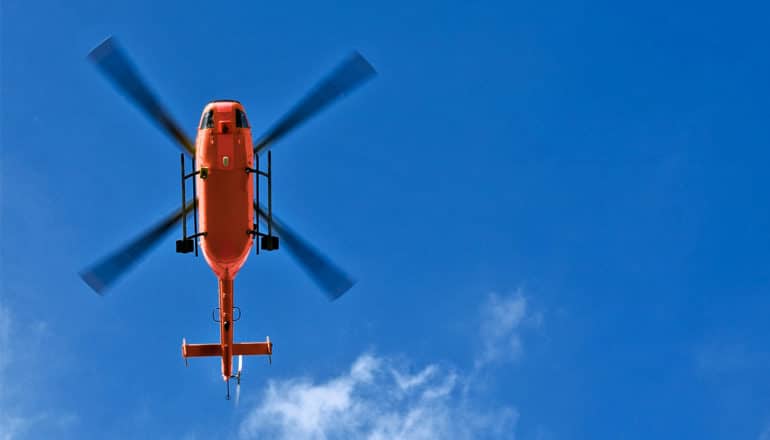
The charges for air ambulance services in 2016 hovered between 4.1 and 9.5 times the rate Medicare allows, a new study shows.
Publicly insured and in-network patients generally escaped paying full cost, but uninsured and out-of-network patients likely received bills for the whole amount.
For-profit companies primarily run air ambulance services in the US—and charges usually consist of an initial flat fee plus a fee per mile. Types of transport include rotary-wing services such as helicopter transportation and fixed-wing services, which typically involve a jet flight.
During the course of the study, the average distance traveled was about 60 miles for rotary-wing ambulance and about 200 miles for a fixed-wing craft.
The study identified high charges in both types of transport, with rotary-wing services charging 5.3 to 7.3 times the Medicare rate and fixed-wing transport charging 4.1 to 9.5 times the Medicare rate. In contrast, the national median charges for ground ambulance services in 2016 were only 1.6 to 2.8 times the Medicare rate.
“It’s not realistic to expect people to shop in advance for the most economical air ambulance service…”
In 2016, the median charges per mile for rotary-wing and fixed-wing ambulances were, respectively, $238 and $104, compared to the median Medicare rates of $33 and $12. The median charges for one-way service via rotary-wing ($24,946) and fixed-wing ($17,838) were well above the median Medicare rates of $4,814 and $4,204. These median charge ratios, which are calculated by dividing the ambulance companies’ charges by the Medicare rate, have increased 46-61% from 2012 through 2016.
A market failure within the industry explains the sky-high charges, says Ge Bai, an associate professor at Carey Business School at Johns Hopkins University.
“It’s not realistic to expect people to shop in advance for the most economical air ambulance service or to be aware of provider network status, so we end up with a typical market failure in which consumers simply cannot comparison shop, say no, or walk away,” Bai says. “Air ambulance providers take advantage of this market failure and charge high.”
While many states have passed legislation to help out-of-network medical patients hit with surprise medical bills, the federal Air Deregulation Act of 1978 makes it difficult for states to regulate the rates, routes, and services of commercial airlines, including air ambulance companies, Bai says.
She says she sees some hope in a bipartisan bill in Congress that would limit the price paid to out-of-network air ambulance providers.
“What emerges from our study is an evident need for a stronger federal effort to regulate air ambulance billing practices. Otherwise patients, especially those in emergencies who have limited options and little bargaining power, will remain at risk of exposure to excessive charges,” Bai says.
The paper appears in Health Affairs.
Source: Johns Hopkins University
The post Air ambulance services seriously overcharge patients appeared first on Futurity.
from Futurity https://ift.tt/37vlv2S
No comments:
Post a Comment